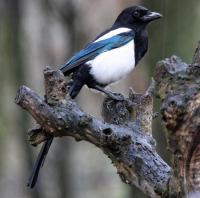- Home
- FAQs
- Customer Video Gallery
- Customer Photo Gallery
- Bird Facts
- Bird Food Blog
- Bird Information
- Feeding Advice
- Small Animal Information
- A to Z of Guinea Pigs
- A to Z of Hamsters
- A to Z of Rabbits
- Basic Care for Guinea Pigs
- Basic Care for Hamsters
- Basic Care for Rabbits
- Basic care for Chinchillas
- Basic care for Ferrets
- Basic care for Gerbils
- Basic care for Mice
- Basic care for Rats
- Buying a Healthy Small Animal
- Does your Reptile need a Licence
- Equipment for Ferrets
- Equipment for Hamsters
- Equipment for Mice
- Equipment for your Chinchilla
- Equipment for your Gerbil
- Equipment for your Guinea Pig
- Equipment for your Rabbit
- Keeping a House Rabbit
- Dog Information
- Cat Information
- Customer Information
- Fat Balls
- Suet Pellets
- Straights
- Seed Mixes
- Suet Treats
- Mealworms
- Bird Feeders
- My Account
Wood Pigeons
Date: 2016-10-18 14:51:53 | Category: Bird Feeding | Author: David Cole
Wood pigeons – you love them or hate them – greedy, messy, noisy, friendly, acrobatic – and great characters.They are frequent bird table regulars and eat just about anything that is put before them. They will nest within feet of a house, and sit on the eggs (there are usually two of them on a flat platform of twigs) even when they are obviously being observed by the householders.
In the countryside, although they still eats acorns, beechmast and wild berries, the wood pigeon finds a more reliable and longer-lasting winter food supply in cultivated plants, such as clover, kale and turnips.
In the spring, the wood pigeon raids fields of peas and beans, while in late summer it feasts on ripening cereals. Large flocks also glean spilled grain from stubble after harvest time.
When feeding in trees, the wood pigeon is agile for a bird of its size, often hanging upside down from thin twigs to reach blossoms and nuts at the tips of branches.
The wood pigeon does not have a clearly defined breeding season, and nests have been found in every month. In towns, most eggs are laid in April and May, but the rural peak is from July to September to coincide with the grain crop.
Nests are thin platforms of twigs, usually in trees or bushes, sometimes on the ground, and often on buildings in towns.
The wood pigeon usually lays only two eggs in a clutch, but may raise three broods a year. Both sexes incubate the eggs and feed their young. For their first few days the nestlings, known as squabs, drink “pigeon’s milk,” a protein-rich liquid produced in each adult’s crop.The squabs then receive regurgitated seeds from their parents and are independent after a month.
We are currently watching a pair who have started to build their third nest this year. I suspect that they are fairly young as the nest building is pretty haphazard with some very enthusiastic branches being brought in and pigeon-handled into position.





